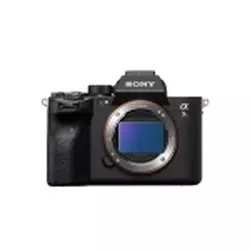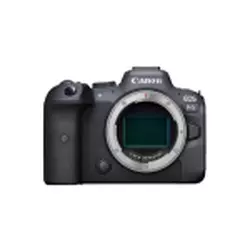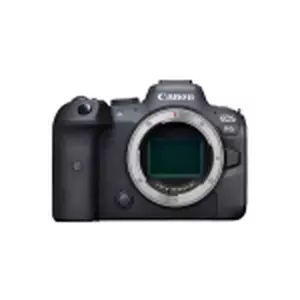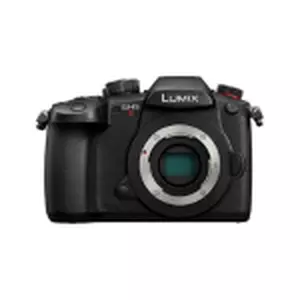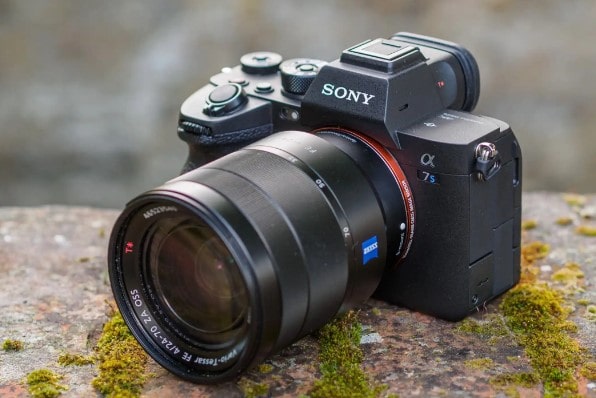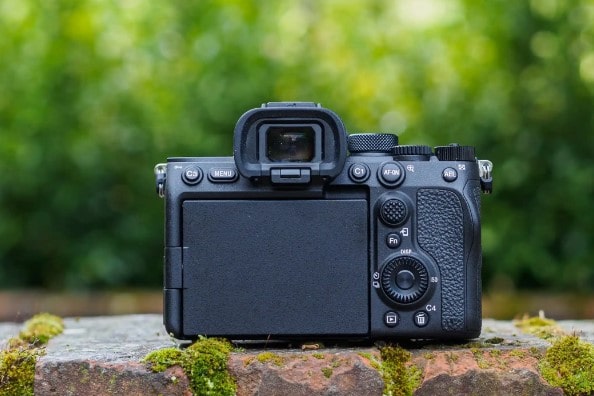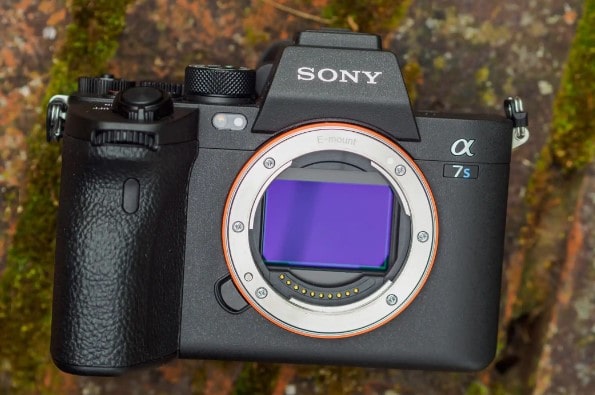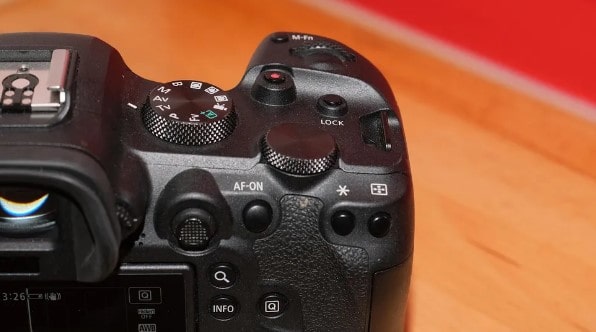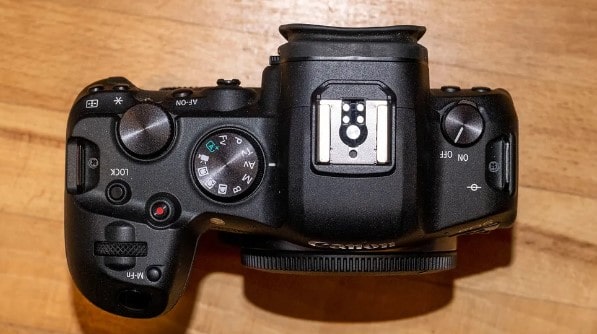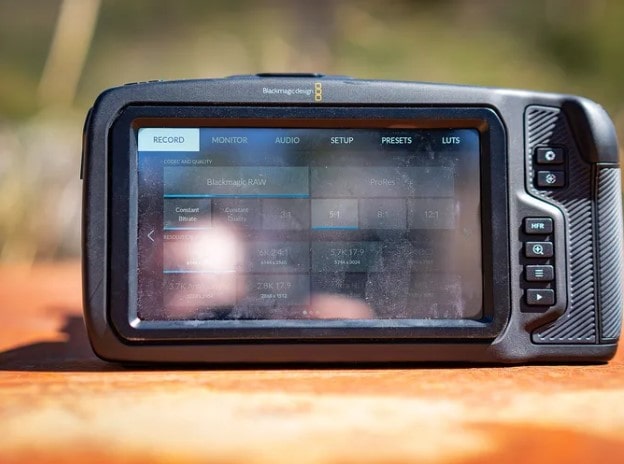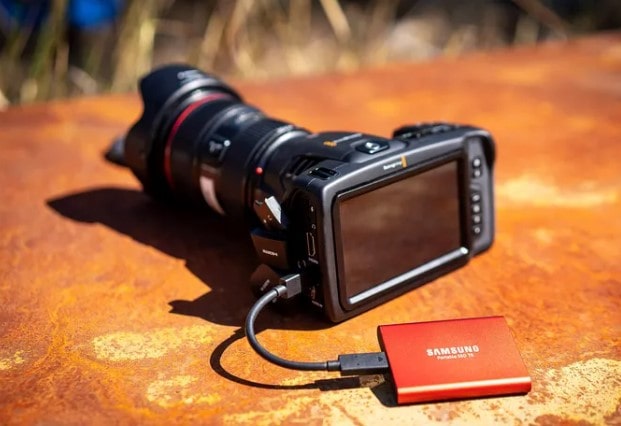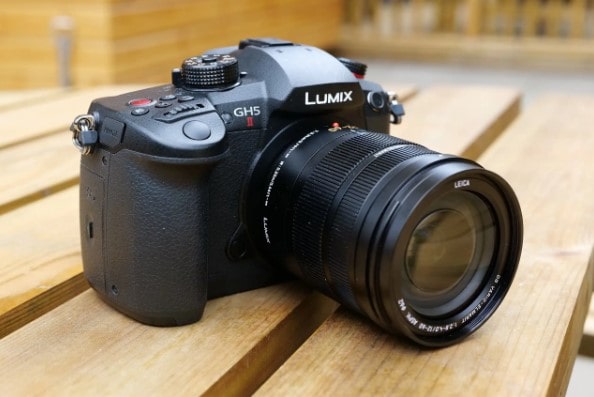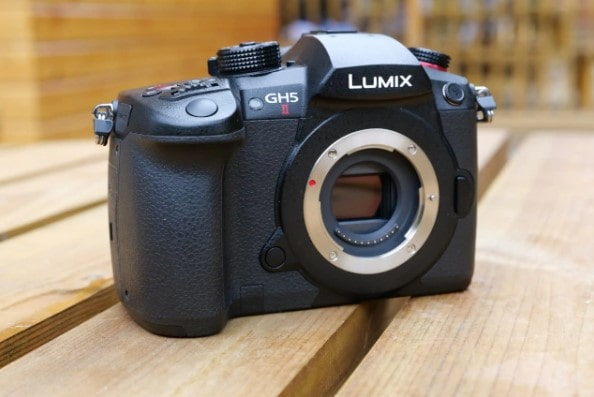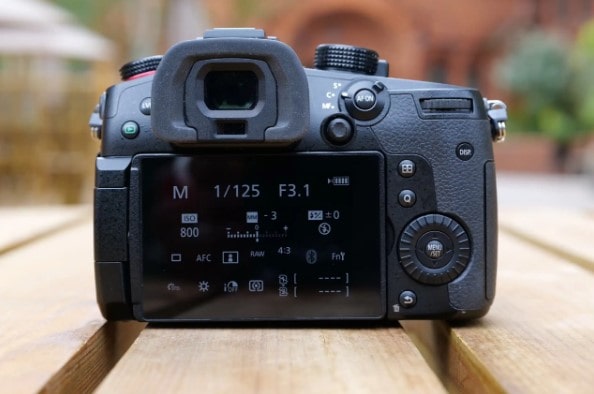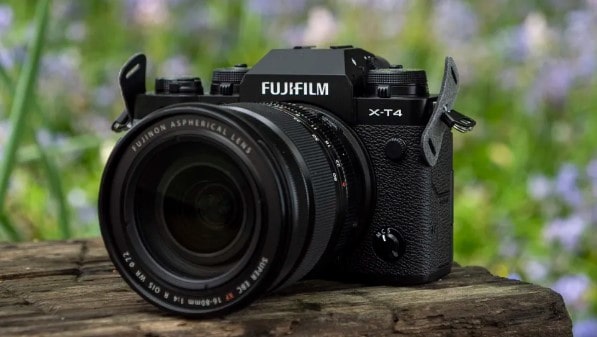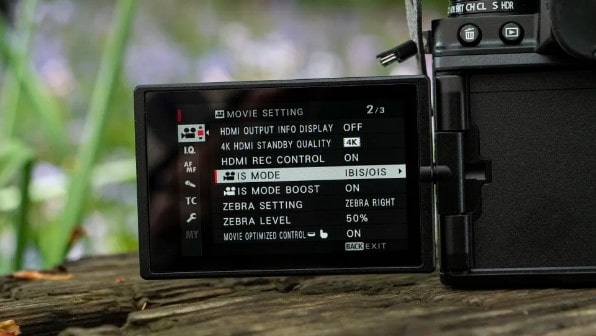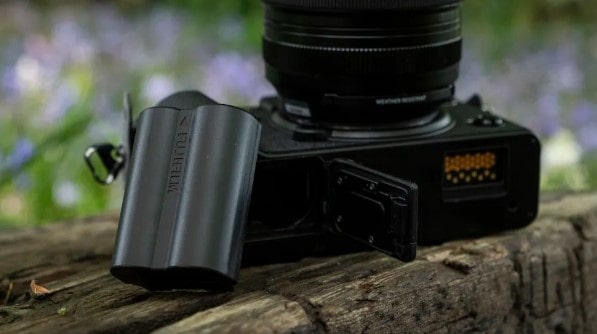Best Camera for Music Videos
Hey there! Let's get real for a second. The last time I tried to film a music video, it was for my cousin's garage band. Armed with nothing but enthusiasm and my trusty flip phone (don't judge, it was 2007), I created what can only be described as a shaky, pixelated mess. The band broke up shortly after. Coincidence? I think not.
Fast forward to today, and I've learned a thing or two about what it takes to create a music video that doesn't look like it was shot underwater during an earthquake. Whether you're an aspiring Hype Williams or just trying to make your indie folk duo look cooler than two people with acoustic guitars have any right to be, choosing the right camera can make or break your music video.
In this guide, we're going to navigate the wild world of cameras for music videos. We'll cut through the tech jargon faster than a heavy metal guitar solo and get to the heart of what really matters: making your artist look like a rock star (even if they're still playing gigs in their mom's basement).
From 4K beasts that capture every bead of sweat to budget-friendly options that won't force you to sell your drummer's kit, we've got something for everyone. So grab your storyboard, put on your director's beret (what, you don't have one?), and let's dive into the cameras that'll take your music videos from "meh" to "holy moly!"
If you're in a hurry and need a TL;DR, here are my top two picks for cameras that'll make your music videos pop harder than a boy band in the 90s:
Table of Contents:
- Best Camera for Music Videos: A Buyer`s Guide
- Best Video Camera for Music Videos: TOP 5
- Camera for Shooting Music Videos: Comparison
- Sony Alpha a7S III
- Canon EOS R6
- Blackmagic Pocket Cinema Camera 6K Pro
- Panasonic Lumix GH5 II
- Fujifilm X-T4
- Camera to use for Music Videos: FAQ
Best Camera for Music Videos: A Buyer`s Guide
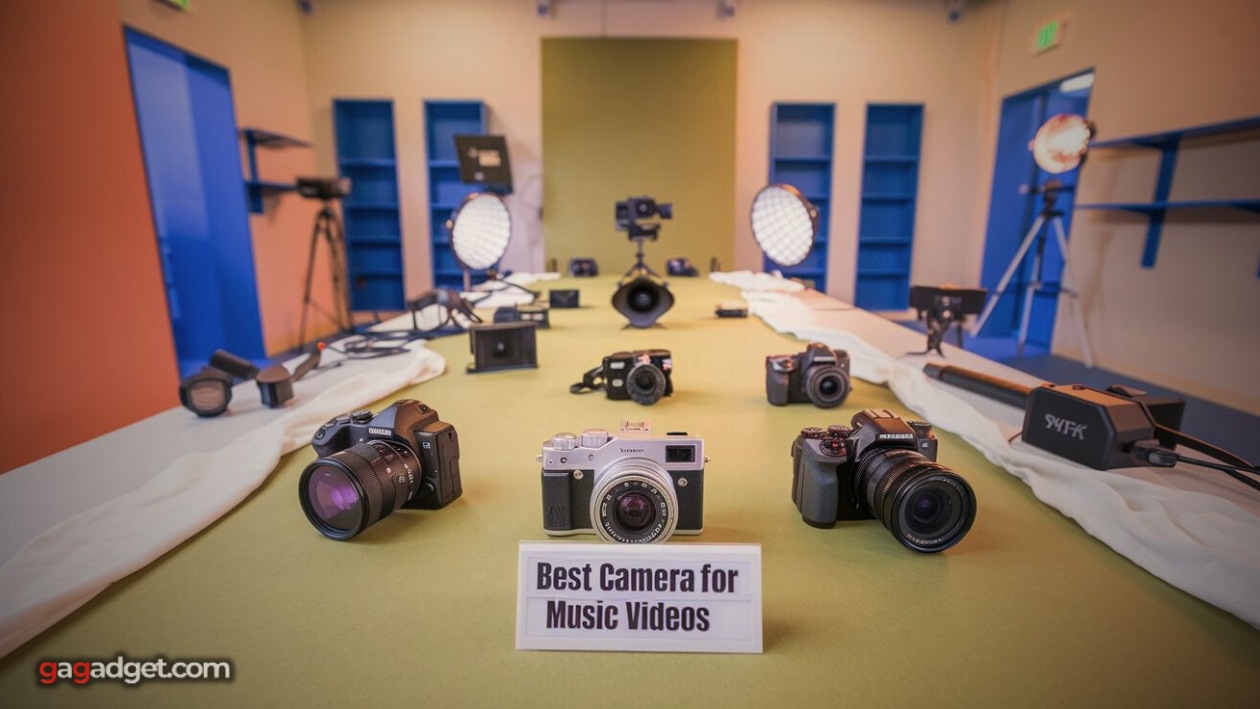
Alright, future Scorsese of the music world, let's talk about picking the right camera for your next masterpiece. Choosing a camera for music videos is like picking a lead singer - you need something that can perform under pressure, handle different environments, and hopefully, won't throw a tantrum mid-shoot.
Resolution: Because Pixels Matter (Sometimes)
First things first - resolution. We're living in a 4K world, baby, and while your parents might still be watching fuzzy VHS tapes, your audience expects crystal clear footage. A 4K camera for music videos is almost standard these days, giving you crisp visuals and the ability to crop without losing quality. It's like having a backup dancer - not always necessary, but nice to have when you need it.
Remember, though, more pixels aren't always better. Good lighting and composition can make 1080p look better than poorly shot 4K. It's not the size of the pixels, it's how you use them.
But don't get too caught up in the numbers game. A well-shot 1080p video can still look fantastic, especially if you're working with a tight budget or planning to release primarily on social media platforms.
Low-Light Performance: For When the Party's Just Getting Started
Unless you're shooting exclusively in sun-drenched fields (hello, indie folk bands), you're going to need a camera that can handle low light. Many music videos are shot in dimly lit clubs, moody studios, or during the "magic hour" just before sunset. A camera with good low-light performance is like a vocalist with great range - it can handle whatever you throw at it.
Look for cameras with larger sensors and good ISO performance. Full-frame sensors generally perform better in low light, but don't discount some of the newer APS-C and Micro Four Thirds options. They've come a long way, baby.
Frame Rates: Slow Motion for Extra Emotion
High frame rates are the secret sauce of many music videos. The ability to shoot at 60fps, 120fps, or even higher allows for buttery smooth slow-motion shots. Imagine a drummer's hair flowing in glorious slow-mo or a guitarist's fingers dancing across the fretboard in super-slow motion. It's the difference between a good video and one that makes viewers hit repeat.
Pro tip: Make sure your camera can shoot high frame rates at a decent resolution. 1080p at 120fps is great, but 4K at 60fps? Now we're talking.
But remember, like Auto-Tune, slow-motion is best used in moderation. Mix it up with normal speed footage for maximum impact.
Autofocus: Because Manual Focus and Dancing Don't Mix
Good autofocus can be a lifesaver when shooting music videos. Artists tend to move around a lot (unless you're filming a shoegaze band, in which case, static shots are probably fine). A camera with fast, accurate autofocus, especially with features like eye-tracking, can keep your subjects sharp even when they're busting moves.
Look for cameras with advanced autofocus systems, particularly those with good subject tracking. It's like having an extra assistant who's solely focused on, well, focus.
Battery Life and Recording Limits: The Unsung Heroes
Nothing kills the vibe faster than a camera that dies mid-take or overheats after 20 minutes of recording. When choosing a camera for filming music videos, consider battery life and any recording time limits. Some cameras have a 30-minute recording limit, which can be a pain if you're doing long takes or live performances.
Look for cameras with good battery life, the option to use external power, and no (or high) recording limits. It's the videography equivalent of stamina - not the most exciting spec, but oh-so-important when it counts.
Choosing the best camera for making music videos is about finding the right balance for your needs and budget. It's like putting together a band - you need the right mix of talents to create something special. Whether you're shooting your first low-budget video or aiming for MTV (do they still play music videos?), there's a perfect camera out there for you. Now, let's check out some of the top contenders!
Best Video Camera for Music Videos: TOP 5
After countless hours of testing, debating, and yes, even a few music video shoots (my neighbor's cat now has a thriving YouTube channel), I've narrowed down the top 5 cameras that'll turn your music videos from potential "Bootleg Broadway" to "Billboard Hot 100" material. These cameras offer the best blend of features, quality, and value for aspiring music video directors and bands looking to make their mark in the visual world of music.
- Unmatched low-light performance
- 4K 120fps for stunning slow-motion
- Excellent autofocus system
- 10-bit 4:2:2 internal recording
- Robust build quality
- Excellent autofocus system
- 4K 60fps video capability
- Impressive in-body stabilization
- Good low-light performance
- Dual card slots for backup
- Stunning 6K resolution
- Beautiful, cinematic image quality
- Built-in ND filters
- Blackmagic RAW format
- Excellent color science
- Excellent 4K video quality
- Robust in-body stabilization
- 10-bit 4:2:2 internal recording
- V-Log L pre-installed
- Durable, weather-sealed body
- Excellent 4K video quality
- Effective in-body stabilization
- Great color science and film simulations
- Compact and stylish design
- Good value for money
Camera for Shooting Music Videos: Comparison
Alright, let's break down these visual virtuosos side by side. Think of this as the camera equivalent of a battle of the bands, but instead of sick guitar solos, we've got sensor sizes and frame rates:
| Specification | Sony Alpha a7S III | Canon EOS R6 | Blackmagic Pocket Cinema Camera 6K Pro | Panasonic Lumix GH5 II | Fujifilm X-T4 |
| Sensor | 12.1MP Full-Frame | 20.1MP Full-Frame | Super 35 | 20.3MP Micro Four Thirds | 26.1MP APS-C |
| Max Video Resolution | 4K at 120fps | 4K at 60fps | 6K at 50fps | 4K at 60fps | 4K at 60fps |
| Low Light Performance | Exceptional | Excellent | Very Good | Good | Very Good |
| In-Body Stabilization | Yes | Yes | No | Yes | Yes |
| Autofocus System | 759-point Phase-detection | Dual Pixel CMOS AF II | Contrast-based | DFD technology | 425-point Hybrid |
| Special Features | S-Cinetone, 16-bit RAW output | Canon Log, C-Log 3 | Built-in ND filters, Blackmagic RAW | V-Log L, Live streaming | F-Log, Film Simulations |
| Battery Life (Video) | 95 minutes | 95 minutes | 60 minutes | 60 minutes | 80 minutes |
| Weight | 699g | 680g | 1238g | 727g | 607g |
Each of these cameras brings something unique to the music video party. Let's dive deeper into what makes each one a potential star in your production toolkit.
Sony Alpha a7S III Camera for Recording Music Videos Review
Editor's Choice
If cameras were band members, the Sony Alpha a7S III would be that versatile lead singer who can hit every note and look good doing it. This camera is like the lovechild of a night vision goggle and a Hollywood film camera, wrapped up in a sleek, mirrorless body.
Let's talk about its superpower: low-light performance. With its 12.1MP full-frame sensor, the a7S III can practically see in the dark. It's perfect for those moody, dimly lit music video scenes that make viewers feel like they're in an exclusive underground club. Whether you're shooting in a neon-drenched dive bar or a candlelit acoustic session, this camera delivers clean, noise-free footage that'll make your video look like a million bucks (even if your budget is more in the "three digits" range).
But the a7S III isn't just a one-trick pony. It can shoot 4K video at up to 120fps, allowing for buttery-smooth slow-motion shots. Imagine capturing every droplet of water splashing off a drummer in epic slo-mo. It's the kind of shot that turns a good music video into a visual feast.
The autofocus on this thing is faster than a guitar player's fingers during a face-melting solo. With 759 phase-detection points, it keeps your artists tack-sharp, even when they're pulling their best dance moves. Eye-tracking autofocus means you can focus on directing, not fiddling with focus rings.
Color grading enthusiasts will love the 10-bit 4:2:2 color and S-Log3 gamma curve. It's like having a full set of paints and a blank canvas - the possibilities for creating your visual style are endless. And with the ability to output 16-bit RAW video to an external recorder, you've got more editing flexibility than a yoga instructor.
Battery life is impressive, giving you about 95 minutes of continuous recording. That's long enough to capture your band's entire set, including encores (and maybe even the after-party).
Pros:
- Unmatched low-light performance
- 4K 120fps for stunning slow-motion
- Excellent autofocus system
- 10-bit 4:2:2 internal recording
- Robust build quality
Cons:
- Lower resolution for stills
- Menu system can be complex
Summary: The Sony Alpha a7S III is the Swiss Army knife of music video cameras. Its low-light prowess, high frame rates, and stellar autofocus make it a top choice for versatile music video production. While it comes with a premium price tag, the quality and capabilities it offers make it a worthy investment for serious videographers. If you're looking to create professional-grade music videos that can handle any lighting situation, the a7S III is like having a backstage pass to premium video quality.
Canon EOS R6 Full-Frame Mirrorless Camera for Making Music Videos Review
Best Overall
The Canon EOS R6 is like that band member who's good at everything - lead guitar, backup vocals, and can probably even play the triangle if you asked nicely. It's a jack-of-all-trades that doesn't compromise on quality, making it an excellent all-rounder for music video production.
Let's start with the video chops. The R6 can shoot 4K video at up to 60fps, giving you plenty of flexibility for both standard and slow-motion shots. Want to capture the lead singer's hair flip in glorious slow-mo? Check. Need to film a high-energy performance in crisp 4K? Double-check. The 20.1MP full-frame sensor strikes a nice balance between video performance and still image quality, perfect for when you need to grab some promo shots between takes.
One of the standout features of the R6 is its autofocus system. Powered by Canon's Dual Pixel CMOS AF II, it's like having a tiny focus puller inside your camera. With 1053 AF areas covering the entire frame, it can track your subjects with the tenacity of a groupie following their favorite band on tour. Eye-tracking AF works wonderfully for keeping performers in focus, even when they're bouncing around the stage like a caffeinated chipmunk.
Low-light performance is impressive, though not quite at the level of the Sony a7S III. Still, with a native ISO range of 100-102400 (expandable to 204800), you can shoot in some pretty dim conditions without your footage looking like it was filmed through a dirty fishbowl.
The in-body image stabilization (IBIS) is a game-changer for handheld shooting. Offering up to 8 stops of shake correction with compatible lenses, it's like having a tiny steadicam built into your camera. This can be a lifesaver for run-and-gun music video shoots where setting up a gimbal isn't practical.
Color grading enthusiasts will appreciate the inclusion of Canon Log and HDR PQ, giving you plenty of flexibility in post-production to achieve that perfect music video look. Whether you're going for a grungy, desaturated vibe or a poppy, colorful aesthetic, the R6 gives you the tools to make it happen.
Pros:
- Excellent autofocus system
- 4K 60fps video capability
- Impressive in-body stabilization
- Good low-light performance
- Dual card slots for backup
Cons:
- No 4K 120fps option
- Rolling shutter can be noticeable in some situations
- Limited to 8-bit internal recording
Summary: The Canon EOS R6 is a versatile powerhouse that can handle almost any music video situation you throw at it. Its combination of excellent autofocus, strong low-light performance, and robust in-body stabilization make it a reliable choice for both seasoned pros and ambitious beginners. While it may not have the extreme low-light capabilities of the Sony a7S III or the raw video options of some cinema cameras, its well-rounded feature set makes it an excellent choice for those looking to create high-quality music videos across a variety of styles and settings.
Blackmagic Design Pocket Camera for Music Videos 6K Pro Review
Bestseller
If the Blackmagic Pocket Cinema Camera 6K Pro were a musician, it'd be that indie artist who refuses to compromise their vision and ends up creating something truly unique. This camera is not for the faint of heart or those who like their gear to do all the thinking for them. But for those willing to learn its ways, it offers a level of cinematic quality that can turn your music videos into visual albums worthy of Beyoncé.
Let's talk resolution. The 6K Pro shoots, you guessed it, 6K footage. That's more Ks than most people have in their job title. This resolution gives you an insane amount of detail and the ability to crop or reframe in post without losing quality. Want to punch in on the guitarist's fingers during that intricate solo? With 6K, you've got pixels to spare.
The Super 35 sensor combined with the EF lens mount gives you that coveted cinematic look. It's like having a tiny film camera in your hands, perfect for creating music videos with a Hollywood sheen. The 13 stops of dynamic range capture everything from the deepest shadows to the brightest highlights, giving your footage a gorgeous, film-like quality.
One of the standout features of the 6K Pro is its built-in ND filters. It's like having sunglasses for your camera, allowing you to shoot wide open for that shallow depth of field, even in bright conditions. No more fumbling with screw-on filters when you're trying to catch the golden hour light for your indie folk band's pastoral music video.
The Blackmagic RAW format is a game-changer for post-production. It gives you the flexibility of RAW with file sizes that won't make your hard drives cry. Color grading this footage is a joy, allowing you to achieve looks that would make Wes Anderson jealous.
However, this camera isn't without its quirks. The autofocus is... let's say, not its strong suit. It's more "manual focus with hints" than true autofocus. But hey, if Stanley Kubrick could pull focus manually, so can you, right? The battery life is also more indie short film than epic rock opera, so invest in some spares or an external power solution.
Pros:
- Stunning 6K resolution
- Beautiful, cinematic image quality
- Built-in ND filters
- Blackmagic RAW format
- Excellent color science
Cons:
- Weak autofocus system
- Short battery life
- Steeper learning curve
Summary: The Blackmagic Pocket Cinema Camera 6K Pro is a cinematic powerhouse in a (relatively) small package. It's the perfect camera for music video directors who want to create visually stunning, film-like videos and don't mind putting in the work to master their tool. While it may not be the best choice for run-and-gun shooting or those who rely heavily on autofocus, for planned shoots where you can take the time to nail your focus and exposure, the results can be breathtaking. If you're looking to give your music videos a truly cinematic quality and are willing to embrace a more traditional filmmaking workflow, the 6K Pro could be your ticket to visual stardom.
Panasonic Lumix GH5 II Mirrorless Camera to use for Music Videos Review
People's Choice
The Panasonic Lumix GH5 II is like that reliable rhythm guitarist in your band - it might not always steal the spotlight, but it's the backbone that keeps everything together. This camera has earned its stripes in the music video world, becoming a go-to choice for many videographers due to its robust feature set and dependable performance.
Let's start with the video capabilities. The GH5 II can shoot 4K video at up to 60fps, giving you plenty of flexibility for both standard and slow-motion shots. Want to capture the drummer's lightning-fast fills in smooth slow-mo? You're covered. Need to film a high-energy performance in crisp 4K? No problem. The 20.3MP Micro Four Thirds sensor might be smaller than some of its full-frame competitors, but it packs a punch when it comes to video quality.
One of the standout features of the GH5 II is its in-body image stabilization (IBIS). With up to 6.5 stops of shake correction, it's like having a tiny steadicam built into your camera. This can be a game-changer for handheld shooting, allowing you to get smooth, professional-looking footage without lugging around a bunch of extra gear. Perfect for those guerrilla-style music video shoots in locations where you can't exactly roll in with a full production crew.
The GH5 II really shines when it comes to its video features. It offers 10-bit 4:2:2 internal recording, which is like giving your footage a gourmet meal instead of fast food. This means more color information and greater flexibility in post-production, allowing you to really dial in that perfect music video look. The pre-installed V-Log L profile gives you even more latitude for color grading, perfect for achieving that moody, cinematic aesthetic for your indie rock ballad.
Autofocus on the GH5 II has been improved from its predecessor, utilizing advanced DFD (Depth From Defocus) technology. While it may not be quite as snappy as some of its competitors, it's more than capable of keeping your artists in focus, even when they're busting moves that would make your dad at a wedding look coordinated.
A unique feature of the GH5 II is its ability to livestream directly to YouTube or other platforms. While this might not be crucial for traditional music video shooting, it opens up interesting possibilities for live performances or behind-the-scenes content.
Pros:
- Excellent 4K video quality
- Robust in-body stabilization
- 10-bit 4:2:2 internal recording
- V-Log L pre-installed
- Durable, weather-sealed body
Cons:
- Autofocus not as advanced as some competitors
- Smaller sensor may struggle in extreme low light
- Menu system can be complex
Summary: The Panasonic Lumix GH5 II is a workhorse camera that's been battle-tested in the music video trenches. Its combination of excellent video features, robust stabilization, and durable build make it a reliable choice for videographers of all levels. While it may not have the extreme low-light capabilities of full-frame cameras or the resolution of 6K or 8K options, its well-rounded feature set and dependable performance make it an excellent choice for those looking to create high-quality music videos across a variety of styles and settings. If you want a camera that can handle everything from a dimly lit club gig to a sun-soaked beach shoot without breaking a sweat (or your budget), the GH5 II deserves a spot on your shortlist.
Fujifilm X-T4 Mirrorless Camera for Recording Music Videos Review
Best Budget
The Fujifilm X-T4 is like that indie band that comes out of nowhere and suddenly everyone's talking about them. It's not the most expensive or highest-spec'd camera on our list, but it packs a punch that belies its size and price point. If you're looking to create stylish music videos without emptying your band's gig money jar, the X-T4 might just be your new best friend.
Let's talk video chops. The X-T4 can shoot 4K video at up to 60fps, giving you plenty of flexibility for both standard and slow-motion shots. Want to capture the guitarist's perfectly timed jump in glorious slow-mo? You've got it. Need to film a high-energy performance in crisp 4K? No sweat. The 26.1MP APS-C sensor might not be as large as some full-frame options, but it delivers beautiful, detailed footage that'll make your music videos pop.
One of the standout features of the X-T4 is its in-body image stabilization (IBIS). Offering up to 6.5 stops of shake correction, it's like having a tiny gimbal built into your camera. This can be a lifesaver for handheld shooting, allowing you to get smooth, professional-looking footage without needing a degree in steadicam operation. Perfect for those run-and-gun music video shoots where every take might be in a different location.
The autofocus on the X-T4 is snappy and reliable, with 425 phase-detection points covering nearly the entire frame. It's like having a tiny focus puller living inside your camera, keeping your artists sharp even when they're pulling off moves that would make a yoga instructor jealous.
But where the X-T4 really shines is in its color science and film simulations. Fujifilm has a long history in the film world, and they've translated that expertise into digital form. The various film simulation modes can give your footage a distinct look right out of the camera, perfect for creating music videos with a specific aesthetic. Want that vintage, slightly faded look for your retro-inspired pop track? There's a film simulation for that. Looking for rich, vibrant colors for your summer bop? Fujifilm has you covered.
The X-T4 also offers F-Log capability, giving you a flat color profile that's perfect for color grading in post-production. It's like having a blank canvas to paint your music video's visual style on.
Pros:
- Excellent 4K video quality
- Effective in-body stabilization
- Great color science and film simulations
- Compact and stylish design
- Good value for money
Cons:
- Smaller APS-C sensor may struggle in extreme low light
- Limited to 8-bit internal recording
- Battery life could be better
Summary: The Fujifilm X-T4 is a stylish and capable camera that punches above its weight class when it comes to music video production. Its combination of excellent 4K video, effective stabilization, and Fujifilm's renowned color science make it a compelling choice for videographers who want to create visually striking music videos without breaking the bank. While it may not have all the high-end video features of some more expensive cameras, its well-rounded feature set and attractive price point make it an excellent option for indie artists and up-and-coming directors looking to create professional-looking music videos. If you want a camera that can help you create videos with a distinct visual style without requiring a record deal's worth of funding, the X-T4 should be high on your list.
Camera to use for Music Videos: FAQ
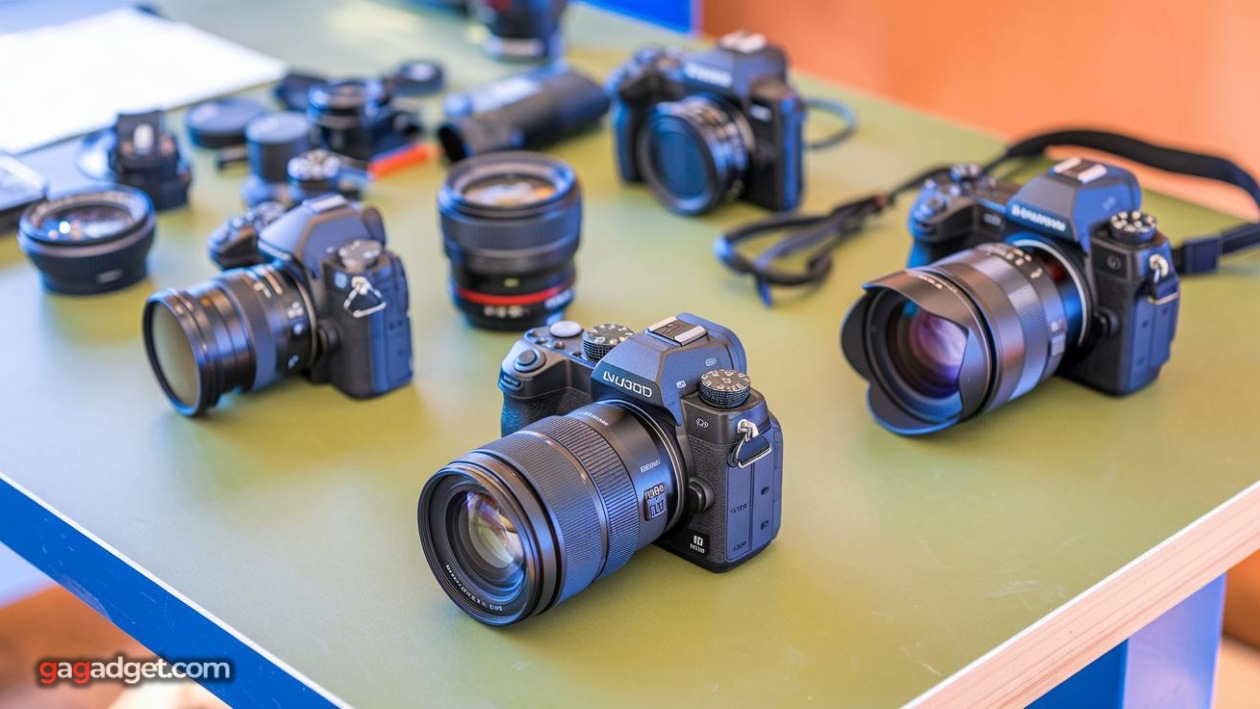
As someone who's spent more time fiddling with camera settings than a guitarist does tuning their strings, I've fielded quite a few questions about shooting music videos. Here are some of the most common queries, answered with a dash of humor and a heap of practical advice.
Do I really need a 4K camera for music videos?
Ah, the eternal 4K question. It's like asking if you need a 100-watt amp for your bedroom jam sessions. The answer is: it depends, but probably yes. While you can certainly create great music videos in 1080p, a 4K camera for music videos offers several advantages. First, it future-proofs your content. As more people get 4K TVs and monitors, your videos will still look crisp and professional. Second, it gives you more flexibility in post-production. You can crop or reframe your shots without losing quality, which is like being able to move your cameras after the shoot. Plus, you can always downscale 4K to 1080p, but you can't go the other way around. So unless you're shooting exclusively for platforms that don't support 4K (looking at you, certain social media apps), go for the 4K option if you can.
What's more important for music videos: high frame rates or high resolution?
This is like asking whether the lyrics or the melody is more important in a song - it really depends on the style you're going for. High frame rates (like 60fps or 120fps) are great for capturing smooth slow-motion shots, which can add a lot of visual interest to your music videos. Imagine a drummer's sticks flying in buttery slow-mo, or a singer's hair whipping around in ultra-smooth motion. On the other hand, higher resolution (like 4K or even 6K) gives you more detail and flexibility in post-production.
If you're shooting a lot of high-energy performances or want to incorporate slow-motion effects, prioritize frame rates. If you're going for a more cinematic look or want the ability to crop and reframe in post, go for higher resolution. Ideally, look for a camera that can give you both, like the Sony A7S III or the Blackmagic Pocket Cinema Camera 6K Pro.
How important is low-light performance for shooting music videos?
Unless you're exclusively shooting boy bands frolicking in sunlit fields (hey, the '90s might come back), low-light performance is crucial for music video production. Many music videos are shot in dimly lit environments like clubs, bars, or moody studios. A camera with good low-light capabilities lets you capture clean, noise-free footage in these challenging conditions without having to blast your artists with bright lights like they're being interrogated.
Cameras with larger sensors (like full-frame models) generally perform better in low light. The Sony A7S III is a low-light monster, but cameras like the Canon EOS R6 and even the APS-C Fujifilm X-T4 can hold their own in dim conditions. Remember, good low-light performance isn't just about shooting in dark rooms - it also gives you more flexibility with your lighting setups and can help you achieve that moody, atmospheric look that so many music videos go for.
Do I need a camera with in-body image stabilization (IBIS) for music videos?
IBIS is like autotune for your footage - it's not strictly necessary, but it can make your life a lot easier and your results a lot smoother. In-body stabilization can help you get steady shots even when you're handholding the camera, which is often necessary in the run-and-gun world of music video production. It's especially useful for adding smooth movement to your shots without needing a gimbal or steadicam.
That said, it's not a must-have. Many music videos are shot on tripods, dollies, or gimbals, which provide their own stabilization. But for those moments when you need to go handheld, or if you're working with a smaller crew and can't always set up support systems, IBIS can be a real lifesaver. Cameras like the Panasonic GH5 II and Fujifilm X-T4 offer excellent IBIS systems that can make your footage look like it was shot with much more expensive stabilization rigs.
Can I shoot a professional music video with just a camera, or do I need a lot of extra gear?
Can you record a hit song with just a guitar? Technically, yes, but a full band usually helps. The same goes for shooting music videos. While you can certainly create a music video with just a camera, some additional gear can significantly up your game. At minimum, consider investing in:
1. A good tripod: For those static shots that are staples of many music videos;
2. Extra batteries and memory cards: Because nothing kills the vibe like a dead camera or full card;
3. A basic lighting kit: Even a couple of LED panels can make a huge difference in your video quality;
4. A decent microphone: For capturing any live audio or behind-the-scenes content;
5. A gimbal or stabilizer: For smooth moving shots that can add production value to your video.
Remember, though, gear doesn't make the video - creativity does. Some of the most memorable music videos have been shot with minimal equipment but maximum imagination. So while additional gear can be helpful, don't let a lack of equipment stop you from creating. After all, OK Go made one of their most famous videos with just treadmills and a camera!
Final Thoughts: Choosing Your Best Video Camera for Music Videos
And there you have it, folks - a whirlwind tour through the world of cameras for music videos. From 4K beasts that can see in the dark to budget-friendly options that punch above their weight, we've covered quite a range. Remember, the best camera for music videos is the one that fits your creative vision, technical needs, and yes, your budget.
If you're after top-notch low-light performance and slow-motion capabilities, the Sony Alpha a7S III is hard to beat. For those seeking a perfect balance of features and performance, the Canon EOS R6 is a stellar choice. If you're after that cinematic, film-like look, the Blackmagic Pocket Cinema Camera 6K Pro might be your new best friend. For robust features and reliable performance, the Panasonic Lumix GH5 II has got you covered. And if you're looking for style and substance on a budget, don't overlook the Fujifilm X-T4.
Remember, at the end of the day, the camera is just a tool. The real magic happens in the space between your creativity and the lens. So pick up that camera, gather your crew (or your cat, we don't judge), and start creating. Who knows? Your next music video might just be the one that breaks the internet. Just try not to let your newfound cinematography skills go to your head - nobody likes a diva, even if they can shoot in 4K.
Now go forth and create some visual masterpieces. And if you happen to win a VMA with one of these cameras, don't forget to thank me in your acceptance speech. I'll be waiting by my phone.
Explore More:
